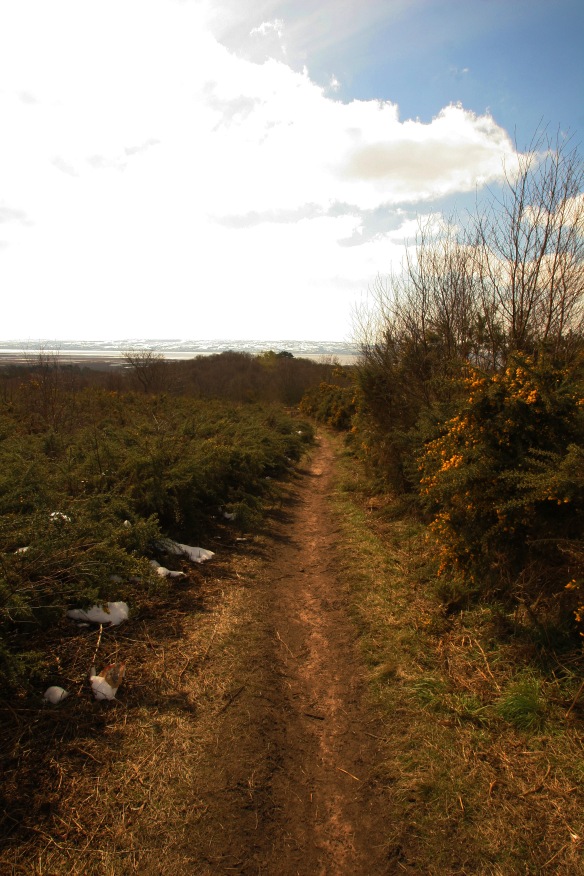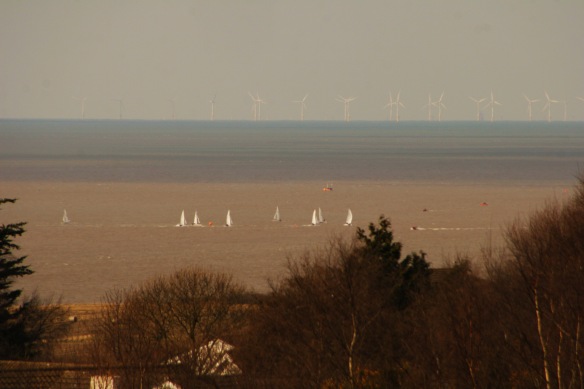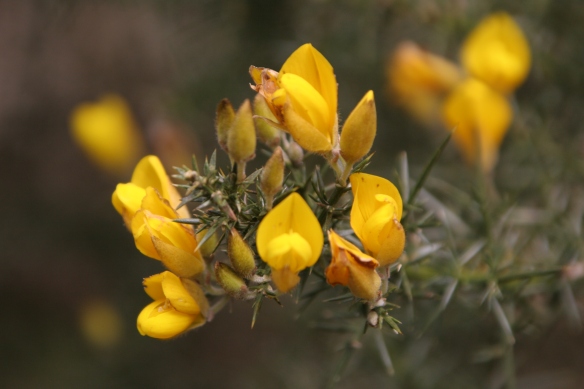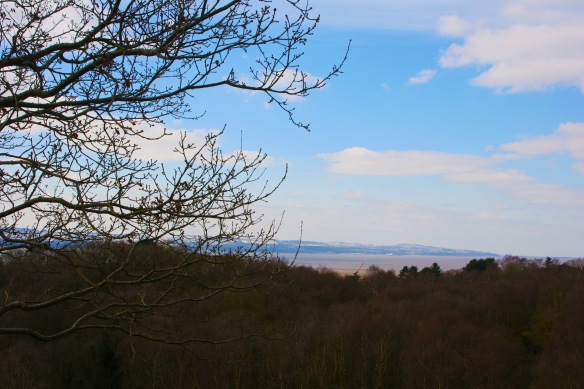I’ve been delayed in uploading my photos from Easter time but finally got around to it today. On Easter Sunday it was a bright but cold morning and I ventured out onto Heswall Dales in the Wirral.
Heswall Dales are on the north eastern side of the Dee Estuary. They are an area of lowland heath of around seventy two acres a short distance out of Heswall town centre. I walked through a narrow lane off Thurstaston Road behind what is now Tesco who built on the site of the old Liverpool Children’s Hospital whose grounds extended down to the Dales. Following the path up and down over rough ground you eventually climb up onto a larger tract of open heathland. When you get onto the higher ground you are rewarded with panoramic views of the hills and mountain ranges of North Wales across the River Dee. Moel Famau still covered in snow could be seen clearly in the early morning haze you could just see the tip of Mount Snowden in the far distance to the left of Moel Famau.
Over to the west sailing dinghies in the River Dee estuary could be seen with Burbo Bank offshore wind farm in Liverpool Bay in the background.
Heswall Dales is one of the series of western lowland heath plant communities occurring on the Triassic sandstone outcrops of Wirral. The area possesses both wet and dry heath, with birch and oak scrub, and some plant species which have a very localised presence. Together with its associated wildlife it represents an important refuge in the ever expanding urban environment of the Wirral.
The heathland was recognised in 1979 as the second best remaining example of lowland heath in the Merseyside area, Thurstaston Common a bit further up the peninsula being the best regarded site locally. The area was designated as a Site of Special Scientific Interest (SSSI) for its heathland habitat by the Nature Conservancy Council which is now known as English Nature. In 1991 Heswall Dales was given the status of a Local Nature Reserve (LNR).
The area has both wet and dry heathland with the dominant plant being Heather (Calluna vulgaris). Drier areas of heath contain a mix of Bell Heather (Erica cinerea) and Western Gorse (Ulex gallii). The gorse species is mainly distributed across the western part of Britain and is of regional significance here.
The mixture of Birch scrub and European Gorse is an important habitat for breeding birds. Gorse provides excellent cover for birds such as Wrens, Yellowhammers and Chaffinches. On this morning a female Kestrel was hovering nearby its eyes fixed on its prey in the heathland below. I stood still for some minutes and managed to get a photograph before it flew off to another part of the Dales.
At Easter the Gorse bushes were in full flower their yellow blooms being one of the earliest flowers of the year.
Heswall Dales has birch and mixed woodland in the valleys running through the site with heathland on the large broadly level area that runs though to Dale Farm at the north of the site. The Contryside Ranger Service of Wirral Council in 2009 received funding from Natural England to carry out a restoration project to reinstate the lowland heath habitat. They cleared the encroaching scrubland of bramble, birch and bracken which had spread and was blocking out the sunlight to the native heather and bilberry.
In order to keep this natural habitat there is a requirement for ongoing management of the Dales and the Countryside Ranger service depend on volunteer days when members of the public help out.
I continued to walk on to Dale End Farm Dale Farm which provides a day service for adults with disabilities and mental illness, giving people opportunities to learn life skills through the therapeutic use of horticulture. From there I walked back onto Thurstaston Road ending my morning’s walk.












